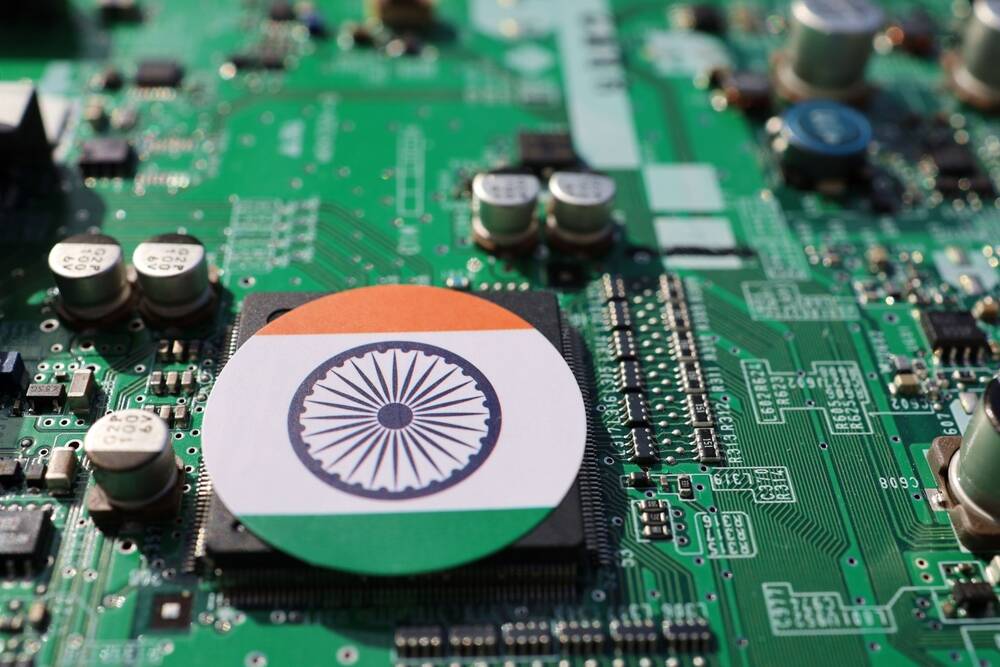India Won't Become A Semiconductor Superpower Anytime Soon, Says Think Tank

India's drive to become a semiconductor superpower is likely to result in the creation of just five chip fabs by the year 2029, and the most sophisticated output from those facilities will be chips built on a 28nm process, according to US think tank the Information Technology and Innovation Foundation (ITIF).
That underwhelming prediction comes after the 2023 launch of the $10 billion Semicon India subsidy scheme that aims to attract more semiconductor investment and has already seen 18 proposals to build chipmaking facilities land on government desks.
The scheme sees India's national and state governments fund construction of semiconductor manufacturing and/or packaging facilities.
ITIF's report [PDF] rated the scheme "currently the world’s most generous."
But if ITIF is right, it won't see India emerge as a top-tier competitor alongside other chipmaking nations. Planned investments by Intel, Samsung, and TSMC in Arizona alone will create more than the five fabs the think tank believes India can build by 2029. And those Arizona fabs will build on smaller processes that allow creation of higher-value and more powerful silicon.
Other fab construction plans across the US, Europe, Japan, and Taiwan also eclipse India's likely achievements as assessed by ITIF.
- India takes second punt at soft lunar landing with launch of Chandrayaan-3 mission
- Foxconn factory chaos means more iPhone delays over the holiday period
- India hits pause on import ban after Apple and Samsung pull out
- Apple wants a quarter of its products manufactured in India, claims minister
ITIF’s report found that, quite frankly, this stuff is hard.
"Fabricating semiconductors is perhaps the most complex manufacturing activity humanity undertakes," wrote the study authors.
ITIF also found that India's challenges go beyond securing investors and facilitating builds. The report stated that the challenge confronting India is "to create a business and policy environment that doesn't just attract one-off investments, but that fosters the emergence of a deep and vibrant semiconductor ecosystem."
That ecosystem must be "active in all the key phases of production, research and development (R&D), fabrication and ATO," argued ITIF, adding that it must also have a network of suppliers and supporting institutions to keep it cost competitive, yet innovative.
"Many interviewees emphasized that, going forward, there's not an emerging economy that offers the scale India does as a rapidly growing marketplace for consumers and business demand alike, presenting a ready-made market to consume the semiconductors India aims to produce," explained the think tank.
That ready-made market is enabled by India's impending compounded 14.6 percent annual increase in disposable income over the next three years and its tech-literate urban middle class.
That emergence of people with disposable income is happening at a time when China’s popularity as a manufacturing destination has waned. Or, as ITIF put it, nations are competing in " a global economy that's reorganizing in real time."
But India's semiconductor scene has a long way to go before it encompasses an entire ecosystem. ITIF acknowledges the country's integrated circuit design capability is its greatest industry strength, but most of India's design talent works for foreign companies. There just hasn't been a significant trend toward a local design ecosystem.
Furthermore, although 20 percent of the world's IC design workforce hails from India, the industry still has shortages globally – and only a small fraction of the more than 800,000 yearly graduates from India's engineering schools are industry-ready.
Another disappointment was that most interviewees on the fact-finding mission agreed it would be some years before India is likely to have fabs producing chips smaller than 28 nanometers – meaning it won't be cashing in on the AI boom – and will also struggle to produce other leading edge products.
And then there's the barrier that arduous or unclear regulations and policies can produce. The think tank asserts that the government and state officials have underscored an industry evolution from "red tape" to "red carpet," yet The Reg notes that some of its tech policies have been confusing or inconsistent.
Fabricating semiconductors is perhaps the most complex manufacturing activity humanity undertakes
One such example – although not solely semiconductor related – is India's recent PC import licensing brouhaha that saw a requirement for PC manufacturers to procure a license announced with immediate effect, only to be immediately delayed after strong backlash. Later still, laptops were removed from the list of devices on the get-a-license list.
Confusing much?
"India has the potential to play a much more significant role in global semiconductor value chains, provided the government upholds its investment policies, maintains a conductive regulatory and business environment, and avoids measures that create unpredictability," concludes ITIF.
It's a lot of ifs. But given that the world needs its semiconductors, there's not much choice but to wait and see whether – and how quickly – India can pull it off. ®
Microsoft's Renewable Energy Leap: A Big Step Towards Sustainable Data Centers
In a significant move towards sustainability, Microsoft recently finalized a monumental deal with Brookfield Renewable, ... Read more
Data: The Sword And Shield Against Disinformation
In the age of information overload, distinguishing fact from fiction has become a daunting task. Disinformation, the del... Read more
Taking Flight: Volocopter's Quest To Revolutionize Urban Mobility Gains Momentum
Volocopter, a pioneering company in the field of urban air mobility, is on a mission to transform how people move around... Read more
OnlyFans Under The Microscope: Addressing Concerns Over Child Safety
Concerns Over Child SafetyOnlyFans' ResponseRegulatory ActionsCollaborative EffortsFuture DirectionsConclusion Read more
The AI Arms Race: Big Tech's Bid For Dominance In Artificial Intelligence
In the rapidly evolving landscape of technology, the race for dominance in artificial intelligence (AI) has intensified ... Read more
Decoding The Impact Of OpenAI's Sora Video Model On Industries And Jobs
In the realm of artificial intelligence, OpenAI's Sora video model stands out as a groundbreaking innovation, promising ... Read more

